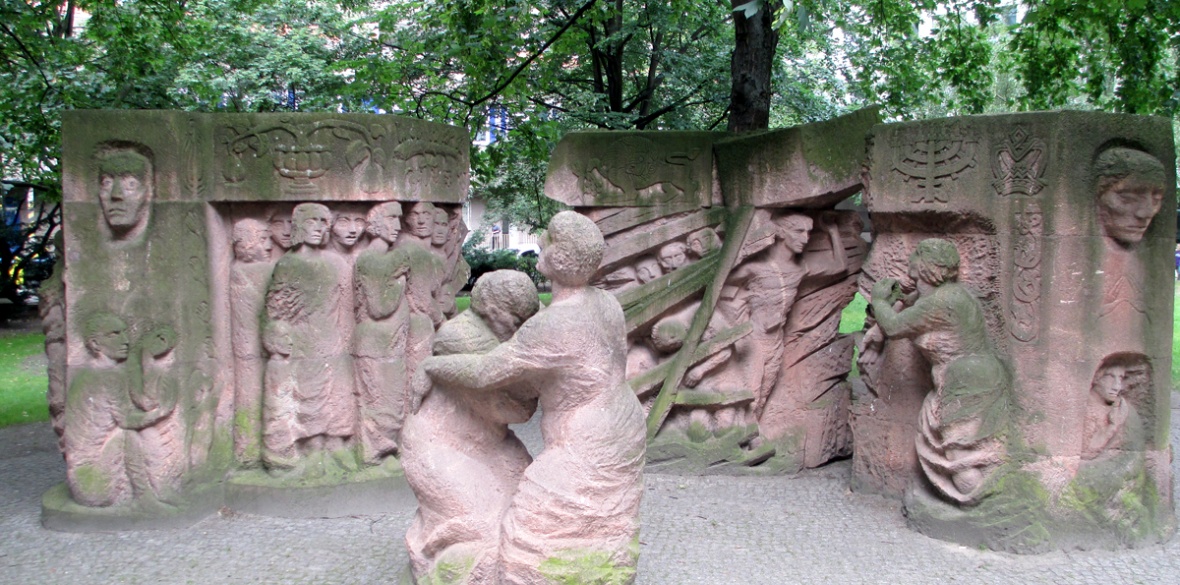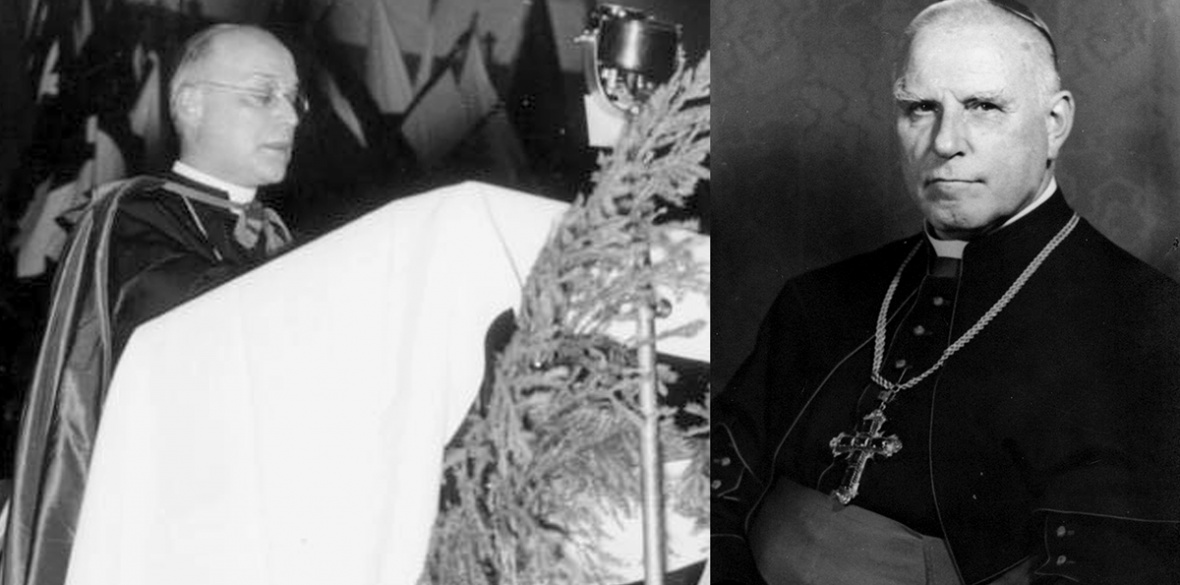This is the last article you can read this month
You can read more article this month
You can read more articles this month
Sorry your limit is up for this month
Reset on:
Please help support the Morning Star by subscribing here
THE popular perception of Adolf Hitler is of an all-powerful leader, the most evil individual in modern history, using extreme barbarity to crush his opponents at home and abroad.
In 2016’s Hitler’s Compromises: Coercion and Consensus in Nazi Germany Nathan Stoltzfus, professor of Holocaust Studies at Florida State University in the US, challenges this simplistic representation, raises important questions about our understanding of the nazis in power, while providing a hopeful analysis about the possibility of non-violent resistance in highly repressive societies.
What is the central thesis of your book?
Hitler’s Compromises makes an argument about the nature of the nazi state. I do not question Hitler’s reputation as the most evil person, only the common image of him as a madman, carpet-biter foaming at the mouth.
Hitler was able to achieve such monumental evil only because he used a range of tactics. While his dictatorship murdered millions in the name of ideology, Hitler managed his “German-blooded race” with persuasion, enticement, co-optation, compromise — tactics scholars now associate with “soft” dictators of the 21st century.
Hitler aimed to shape the “German-blooded” people into nazis — fellow perpetrators and ruthless enslavers and murderers of “racial” and war enemies, the “incurables” and outsiders.
“We must be honest, decent, loyal and comradely to those of our own blood and to no-one else,” Heinrich Himmler told his SS. “Whether other peoples live well or whether they die from hunger is important to me only in so far as we need them as slaves for our culture.”
Propaganda minister Joseph Goebbels said: “We do not subscribe to the view that one should feed the hungry, give drink to the thirsty or clothe the naked… We must have a healthy people in order to prevail in the world.”
In Hitler’s cold, cost-benefit calculations, Germans could not be refashioned as nazis by terror alone. Stemming political opposition with terror, Hitler then led by incentives — the familiar ones of material wellbeing and future prosperity, national prowess and domestic security.
As the foundation of his 1000-year Reich that would pass on nazism as a way of life, Hitler sought to refashion popular attitudes and social patterns.
To build a total society to buttress a total state, Hitler had to annihilate some Christian norms. He aimed to change their hearts and minds rather than to merely control their outward behaviour by police force.
Hitler led a dance with his own people, pausing and even backtracking if the people stumbled or hesitated, so that they remained united about his authority over them. Hitler was willing to move laterally so that he could resume moving toward his goals while sidestepping frontal attacks.
These compromises worked in tandem with nazi terror. Hitler did not compromise his ideology but he remained willing to compromise with his people, particularly when popular obstinacy was based in traditional habits and customs, up until late in the war when he became convinced that popular backing would not win the war.
Hitler’s compromises began with his decision to seek power the “legal way.” They continued in power with a recognition that he must win the people away from their non-nazi traditions and into unquestioning obedience by awing them with his great feats, which all previous German leaders had failed to deliver.
A key benefit for Hitler of his willingness to compromise was in maintaining the notion, widespread across Germany regardless of denomination, region, or class, that Hitler always made things right, as soon as he learned about injustices. Across Germany people maintained their belief that “if only Hitler knew” all would be well, blaming what they did not like on officials they thought were working against Hitler.
Your analysis seems to contradict the traditional understanding of how Nazi Germany functioned?
According to the earliest perspectives, the nazi state ruled Germans of the Reich by terror; Germans were forced to co-operate against their will as the Gestapo crushed every sign of dissent from Germans.
These interpretations, which still hold sway today, coincide with one-dimensional images equating monstrous evil with uncontrolled fits of rage and brutality. Scholars have come to acknowledge the role of popular support — when it buttressed nazi terror tactics.
Germans joined the party, denounced outsiders, stole Jewish property. These mainstream perspectives, however, have shied away from acknowledging the corollary popular influences on Hitler of mass popular non-compliance and public protest.
Standard interpretations screen this out; they challenge entrenched common wisdom that resistance by ordinary persons was always futile (even the resistance of mighty military men failed).
While support for Hitler can be written off as a response to terror, any indication that the regime was sensitive to collective, popular opposition in public raises questions about public responsibility for Hitler’s crimes. Also according to common beliefs, Jewish assimilation or integration did not aid Jewish survival.
But history shows that 98 per cent of the German Jews who survived without going into hiding or being sent to the camps, survived because they were married to non-Jews.
Hitler also did not rule by charisma alone but as a politician and strategist.
98 per cent of the German Jews who survived without going into hiding or being sent to the camps, survived because they were married to non-Jews
Many wish to portray Hitler as monster rather than mortal. Demonisation is comforting, suggesting that neither do we share anything with Hitler nor will we ever face a similar threat.
Flat moral condemnations are easy and popular but do not sufficiently disclose the complexity of Hitler’s evil; he was able to do so much evil precisely because he knew how to manage and manipulate, throwing fits of rage for effect.
The grassroots perspectives on the influence of masses that grew in the decades following the war was illustrated by the bottom-up approach of historians examining East German communism after 1989.
It’s very possible that the established history of nazi Germany would be different today had scholars and others approached it with the help of bottom-up perspectives emerging during the 1970s and ’80s.
Many views on popular autocracy in our own era not only apply to Hitler’s rule but were defined by fascism — which recognised that the masses could no longer be left out by claiming to rule on their behalf.
Can you give a couple of examples when the nazi government compromised in the face of nonviolent resistance to its policies?
Hitler’s effort to centralise control over the Protestant Church foundered in 1934 — within months of the gory Night of the Long Knives purge. Two bishops (out of 28) mobilised their congregations in peaceful protests, resulting in strife among nazi regional leaders and the house arrest of the two bishops, causing churchgoers to rise up in protests more fervently than ever.
To stem this unrest and its danger of slowing his momentum, Hitler restored the arrested bishops to their dioceses, sidelining his plans.
To stem Christian influence, some nazi leaders replaced crucifixes in Catholic schools with pictures of Hitler. This sparked nonviolent Catholic revolts, leading in more than one case to restoration of the crucifixes. Mass unrest and public protest by a Catholic bishop also caused Hitler to halt and then radically alter the way he carried out “euthanasia” of the “incurables” and “useless mouths.”
The defining example of defiance by street protest and nazi compromise is the Rosenstrasse Protest by non-Jewish women that persuaded Hitler to release rather than deport their Jewish husbands in early 1943.
Many Germans compromised step by step, accepting or perpetrating nazi crimes, but the personal lives of intermarried persons forced them into a series of increasingly demanding steps of defiance, beginning with Hitler’s first days in power and culminating in a street protest that thwarted Goebbels’s resolve to declare Germany free of Jews in March 1943.
Again Hitler relented, releasing some 2,000 intermarried Jews from the deportations.
Cases of social dissent and mass noncompliance so visible the regime could not ignore them were common enough that by November 1943 Goebbels wrote in his diary that the people were already sure that they could use public protest to assert their will on the streets: “The people know exactly where to find the leadership’s soft spot and will always exploit it.”
Hitler’s Compromises: Coercion and Consensus in Nazi Germany is published by Yale University Press.













